#oskar ii
Explore tagged Tumblr posts
Text

Oskar II (Oskar Fredrik), 1829-1907, King of Sweden 1872 and of Norway 1872-1905
Artist: Oscar Bjorck (Swedish, 1860–1929)
Date: c. 1797
Medium: Oil painting
Collection: National Portrait Gallery of Sweden
Oscar II
Oscar II (Oscar Fredrik; 21 January 1829 – 8 December 1907) was King of Sweden from 1872 until his death in 1907 and King of Norway from 1872 to 1905.
Oscar was the son of King Oscar I and Queen Josephine. He inherited the Swedish and Norwegian thrones when his brother died in 1872. Oscar II ruled during a time when both countries were undergoing a period of industrialization and rapid technological progress. His reign also saw the gradual decline of the Union of Sweden and Norway, which culminated in its dissolution in 1905. In 1905, the throne of Norway was transferred to his grandnephew Prince Carl of Denmark under the regnal name Haakon VII. When Oscar died in 1907, he was succeeded in Sweden by his eldest son, Gustaf V.
#portrait#three quarter length#king of sweden#painting#oil painting#fine art#artwork#royal robes#scepter#crown#oskar ii#swedish monarchy#swedish empire#swedish king#house of bernadotte#swedish culture#swedish art#oscar bjorck#swedish painter#european art#18th century painting
18 notes
·
View notes
Text



Every Prussian monarch, the children of Wilhelm II and Ernst August.
#kaiserreich#frederick william iii#Frederick I#frederick William I#frederick ii#FrederickWilliamII#Frederick William IV#WilhelmI#FrederickIII#wilhelm ii#prince wilhelm#Eitel Friedrich#Adalbert#Oskar#Joachim#Auwi#August Wilhelm#Viktoria Luise#Ernst August#history#art#this took forever
33 notes
·
View notes
Text
NOnono, but EYE see spn season 16 building toward a shocking climax of Rowena not just failing to save Dean II but being the one to actively slit his throat.
Sam would die on the spot.
Caveat: It’s either because Rowena got backed into a corner or it’s a complicated series of events with the end aim of saving the poor dumb kiddo who got himself into this mess.
But on the outside, it’d look like revenge for Oskar. (It’s not, though.)
5 notes
·
View notes
Text
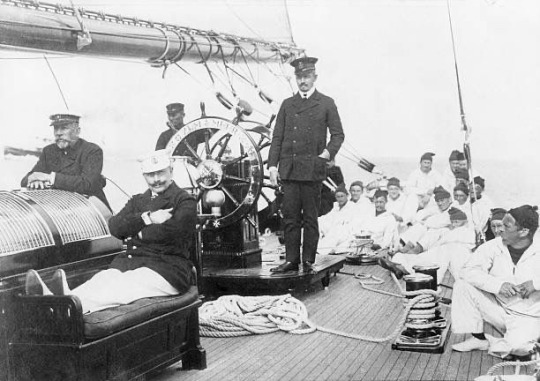
#kaiser wilhelm ii#wilhelm ii#prince oskar of prussia#german empire#imperial germany#german monarchy
3 notes
·
View notes
Text
📽️ Schindler’s List (1993)
I’m about to give an extremely unpopular opinion: I did not like this movie. I am usually majorly interested in World War II era stories, but I had a really hard time with this one. And before someone says “you only like movies that romanticize war,” just know that that is not true. I usually love documentaries and true stories as well as movies like Pearl Harbor. For this one, I think the thing that was hardest for me was the slow pace. I appreciate that the filmmakers stayed as true as they could to what really happened, but I also felt that there were multiple scenes that did nothing to further the story and were just gratuitous. I understand that the point of a movie like this is not necessarily to entertain, but there is a danger of going the other way and boring the viewer with no real emotion. I felt that Liam Neeson especially did not really show emotion until the end. The subject matter of this movie is very emotional and tragic, but the power of those facts can’t carry a movie whose actors didn’t portray that emotion clearly or well. If you like (or love) this movie, more power to you. I was prepared to join your ranks, but I will not be watching it again.
Sex/nudity: 8/10 (frequent prolonged full male and female frontal nudity both sexually and non-sexually, kissing, one sex scene, implied sex)
Language: 6/10 (8 f words, other infrequent milder cursing)
Violence: 9/10 (can’t list it all but it’s pretty graphic)
Overall rating: 3/10
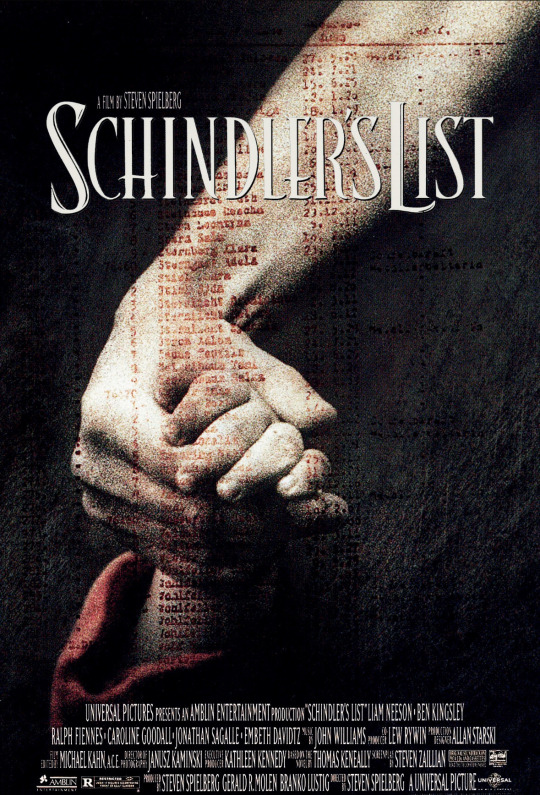
#review#movie#movie review#schindler's list#docudrama#epic#historical epic#period drama#prison drama#tragedy#biography#drama#history#second world war#world war 2#world war ii#world war two#stephen spielberg#liam neeson#oskar schindler#ben kingsley#ralph fiennes#amon goeth#caroline goodall#embeth davidtz#mark ivanir#anna mucha
0 notes
Text
It's so insane and funny to me that film directors of biopics feel the need to add fiction to make the film appear more interesting.
Like. why.
You don't need to come up with anything to make history more compelling.
WHY make anything up, when Friedrich Nietzsche had to buy fucking silk underwears for Richard Wagner once, Abraham Lincoln did wrestling, Victor Hugo lived in a street of his own name when he was alive, Alexandre Dumas fucking shut down a racist with an epic comeback, Edward VII had a sex chair, Tsar Nicholas II has nudes, Igor Stravinsky and Pablo Picasso were arrested for pissing in public together, Oskar Kokoschka commissioned an Alma Mahler fetish doll which he likely had sex with, Roald Dahl wrote some weird and questionable fetish-fanfic books, Salvador Dalí sold a blade of grass to Yoko Ono for $10 000 because he thought she could do witchcraft with a real strand of his hair, etc etc...
Do we REALLY need to make shit up when we have all these batshit stories. DO WE REALLY??????
#currently still experiencing whiplash after learning more about ballets russes dancers#and seeing that at serge lifar's 1958 duel with marquis de cuevas the marquis' witness was JEAN MARIE LE FUCKING PEN#DJAKZJSBSJB#going insane#anyways#history#history nerd#history facts#fun facts#classical music#art#art history#music history#ballets russes#and there's still SO MUCH more#scherzina ramble
79 notes
·
View notes
Text
The Belvedere twins

The history of Belvedere Palace goes back to the 17th century when the Prince Eugen of Savoy commissioned Baroque Architect Johann Lukas von Hildebrandt to build a summer residence. The construction works began in 1712, in what is today the Lower Belvedere (Unteres Belvedere), while the construction of Upper Belvedere (Oberes Belvedere) began in 1717.
After 1716, the Lower Belvedere served as a dividing line between the city and the Baroque architectural complex. Besides the famous Marble Hall, as the central space in the Lower Belvedere, the building houses hard-won war trophies, statues of imprisoned opponents, and terraces and alcoves intended to provide optical illusions of architectural structures.
Prince Eugen commissioned Carlo Carlone, a pioneer of the Rococo style, to paint the fresco ceiling of another Marble Hall, but in the Upper Belvedere, the building that has achieved the most iconic image of the complex.
In 1718, Dominique Girard, a French garden architect was summoned for the construction of the Baroque Park due to his expertise in the design of the garden and water technology.
However soon after the Prince died in 1736, the museum was acquired by his niece, Maria Theresia, who converted the Upper Belvedere into one of the first public museums in the world. The interiors of this palace show off Alexander the Great's victories.
The Upper Belvedere also includes the largest collection of Gustav Klimt paintings in the world, as well as works by Oskar Kokoschka, Egon Schiele, Ferdinand Waldmuller, and other masters of the Austrian Art Nouveau movement, known as Sezession. In 1908, the Imperial Ministry of Culture acquired the Palace’s most renowned piece of Klimt, The Kiss (Der Kuss).
During World War II, the Belvedere Palace became severely damaged and had to undergo renovation. The latest addition to the Palace, the Belvedere 21 was built by the architect Karl Schwanze for the 1958 World’s Fair in Brussels.
6 notes
·
View notes
Text
The Saddest Film Endings
1. The Green Mile (1999)

Directed by Frank Darabont, The Green Mile tells the story of Paul Edgecomb, a death row prison guard, and John Coffey, an innocent man with miraculous healing powers. The film's devastating ending sees Coffey executed despite his innocence, leaving Paul and viewers grappling with the cruelty of humanity.
Why It’s Heartbreaking: Coffey’s death underscores themes of injustice and the fragility of goodness in a flawed world. The emotional weight comes from the bond formed between Coffey and Paul, making his loss feel deeply personal.
2. Grave of the Fireflies (1988)

This animated Japanese film by Isao Takahata depicts the harrowing lives of two siblings struggling to survive during World War II. The ending reveals their ultimate fate in a stark, unflinching portrayal of loss.
Why It’s Heartbreaking: The film’s intimate focus on Seita and Setsuko’s bond makes their tragic deaths feel unavoidable yet profoundly unfair. It’s a sobering reminder of war’s devastating impact on the innocent.
3. Requiem for a Dream (2000)
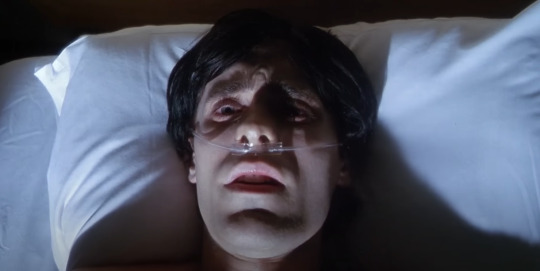
Darren Aronofsky’s grim tale of addiction spiraling out of control leaves every character in a state of utter despair. The final montage shows them broken physically, emotionally, and spiritually, with no hope for redemption.
Why It’s Heartbreaking: The ending offers no catharsis, only a raw portrayal of human suffering. The characters’ descent into their own personal hells leaves a lingering sense of emptiness.
4. Titanic (1997)
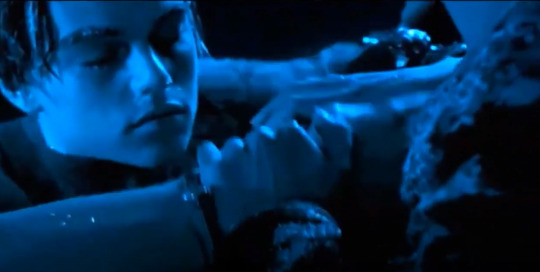
James Cameron’s epic love story culminates in the heartbreaking death of Jack Dawson, who sacrifices himself so Rose can survive. The film’s final moments, showing an elderly Rose reuniting with Jack in the afterlife, cement its emotional impact.
Why It’s Heartbreaking: The loss of young love combined with the massive human tragedy of the Titanic’s sinking creates a dual layer of sorrow that resonates universally.
5. Schindler’s List (1993)

Steven Spielberg’s historical drama ends with Oskar Schindler breaking down as he realizes he could have saved more lives during the Holocaust. The film closes with a powerful scene of Holocaust survivors honoring Schindler’s memory.
Why It’s Heartbreaking: Schindler’s grief and the sheer magnitude of the Holocaust’s horrors leave viewers overwhelmed by the weight of both individual and collective loss.
6. The Boy in the Striped Pajamas (2008)

This World War II drama follows the friendship between a young German boy and a Jewish boy in a concentration camp. The devastating climax sees them both killed in a gas chamber.
Why It’s Heartbreaking: The innocence of the children and the senselessness of their deaths amplify the tragedy of the Holocaust, leaving viewers haunted by its cruelty.
What Makes a Film Ending the Saddest?
A truly heartbreaking ending often includes:
Emotional Investment: Deeply developed characters and relationships make their losses feel personal.
Themes of Injustice or Sacrifice: Unfair outcomes or selfless acts amplify the sorrow.
Lack of Resolution: Films that leave characters or situations unresolved can intensify feelings of grief.
Universal Resonance: Stories that reflect shared human experiences—love, loss, and mortality—leave a lasting impact.
Conclusion
Films like The Green Mile, Grave of the Fireflies, and Schindler’s List consistently stand out for their ability to evoke deep, universal sorrow. Each ending leaves audiences not only mourning the characters but also reflecting on larger themes of humanity, loss, and the fragility of life. The power of these stories lies in their capacity to turn sorrow into a profound, unforgettable experience.
#Saddest Movie Endings#Emotional Movies#Heartbreaking Films#The Green Mile#Grave of the Fireflies#Titanic#Requiem for a Dream#Schindler’s List#The Boy in the Striped Pajamas#Film Analysis#Movie Moments#Movie Lovers#Film Buff#Cinematic Masterpieces#Movie Critique#Heartbreaking Endings#Emotional Cinema#Sad Film Moments#Classic Movies#Movie Recommendations#Iconic Films#Cinephile Community#Film Discussion#Tumblr Movies#Cinematic Feels#Tragic Movie Endings#Oscar-Worthy Films
12 notes
·
View notes
Text
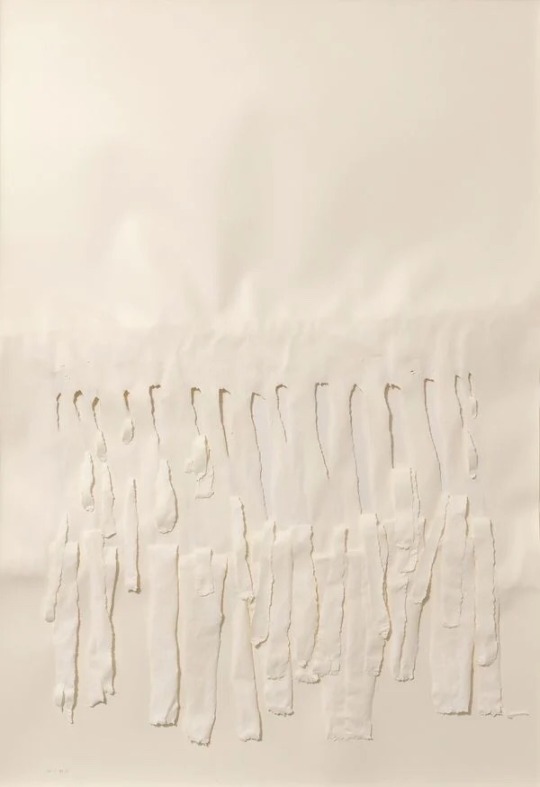
Oskar Holweck, 22 II 82 / 1 Torn Relief (1149_108), 1982
8 notes
·
View notes
Text
swedish royal (nick)names pt. 1

King Oscar II with family. Unknown painter, 1905.
I was talking with @foreverinthepagesofhistoryy the other day & we ended up on the topic of royal names & nicknames. Specifically how the Swedish Royal Family loves to Swedify names & how it can be difficult to differentiate who is who in the Bernadotte dynasty because everyone is called Karl/Carl or Gustaf/Gustav. This inspired me to make this series of what the royals' official names were vs. what they were actually called day-to-day. Plus other fun facts surrounding their names.
As you will notice when scrolling through this post, I've settled on a structure of: [if applicable, the name they were born with] / [the Swedish name] / [if applicable, the English name]
First generation
Jean-Baptiste Bernadotte / Karl XIV Johan / Charles XIV John
When Karl Johan was part of the French military, he was allegedly nicknamed Belle-Jambe. This is said to have been a nod towards his *cough* talent to charm women...
Then later when he became chosen as the Swedish Crown Prince, his name was Swedified. Jean became Johan & he adopted Karl as a nod towards his "adoptive father". His official name went down in history as Karl Johan but sometimes you see the spelling Carl Johan & Jean-Baptiste sometimes signed his new Swedish name as Charles-Jean (maybe because he never learned Swedish, who knows).
Désirée Clary / Desideria
While her given name was Désirée, all her friends & family seem to have been referring to her by one of her middle names: Eugénie.
It's said that Karl Johan's nickname for Desideria was Bonette, however, I've so far never been able to find a reliable source for this claim.
After her husband was named heir to the Swedish throne, she stayed in Paris "incognito" under the name Grevinnan av Gotland (Countess of Gotland).
Second generation
Oscar I / Oskar I
Here we see a classic case of Swedification. The man himself & his contemporaries wrote his name as Oscar. However, the Swedish Royal Court today has gone with the Swedish version of Oskar.
Joséphine de Beauharnais / Josefina / Josephine of Leuchtenberg
While her official name has gone down in history as Josefina, contemporary accounts referred to her as Josefine - a name that is still popular today.
Just like her mother-in-law, Josefina travelled incognito via an alias. Hers was Grevinnan av Tullgarn (Countess of Tullgarn).
One of her philanthropic legacies is Josephinahemmet, an elderly home for Catholics. So as you guys can see, people have never been able to agree on how this woman's name should be spelled.
Third generation
Karl XV / Charles XV
Commonly referred to as the most popular monarch of all times, Karl was apparently so beloved by the people that he got the nickname Kron-Kalle (Crown-Charlie).
However, while he is remembered as Karl, he himself spelt it as Carl.
Louise van Oranje-Nassau / Lovisa / Louise of the Netherlands
Born as Louise, she got the official name of Lovisa upon arriving in Sweden. However, it seems like she continued using her childhood name & just like with her mother-in-law, some contemporaries settled on a compromise by referring to her as Louisa (see for example Eugenia).
Gustaf
Gustaf has gone down in history as Sångarprinsen (the Singer Prince), however, his pseudonym as a composer was G*****.
Oscar II / Oskar II
Just like his father, people haven't been able to agree on how to spell his name. He himself & his contemporaries used Oscar but it's common to see the Swedified version of Oskar.
Oscar loved to participate in the political debate & did so "anonymously" under the pseudonyms O**** & Oscar Fredrik.
Sophia von Nassau / Sofia
While she was born as Sophia & then was given the Swedified version Sofia as her official name, she herself used the name Sophie throughout her entire life & was lovingly called Tante Sophie by the entire Royal Family.
It's said that her brothers jokingly called her "unsere demokratische schwester" (our democratic sister).
Two of her philanthropic legacies are Sophiahemmet (which today, another Sofia is patron of) in Stockholm & Sophies minde in Oslo.
Eugénie / Eugenia
This woman is interesting because her official & given name is Eugenia but both she & her contemporaries seem to have used Eugénie. On the Swedish Royal Court's website, she is referred to by both versions of her name & I've noticed a trend over the last few years that more & more she's mentioned as Eugénie rather than Eugenia.
Just like her older brother Gustaf, Eugenia was a composer & used the pseudonym E******. While not as well-known as her brother, she did write, for example, two pieces in the 1850s named "Drottning Josephinas polonaise" & "Louisa Wals", in 1860s she & her mother wrote the piece "Ach, wie schön die Glocken klingen" together (music by Eugenia & text by Josefina), then in 1871 she composed as piece in remembrance of "Louisa".
August
Finally, someone whose name everyone can agree on! I also can't find any mention of him ever earning a nickname...
Thérèse von Sachsen-Altenburg / Teresia
While her official name is Teresia, she was born Thérèse & it seems like friends & family continued to call her that even after she moved to Sweden.
Teresia most likely suffered from some type of mental illness, but back then she was just described as "unbalanced" & "stupid". This caused her to mockingly get called "Lilla hoppitossan" (little Hopsy-Totsie) by everyone, including her husband, at the Royal Court.
From the 1890s onwards, things seemed to get better for Teresia & she moved into Haga Palace, thus earning her the nickname Hagahertiginnan (the Haga Duchess).
Part 2 with the fourth, fifth & sixth generation will be published soon!
#swedish royal family#royal history#swedish history#if there is one thing i've learned when researching this it's that royals are terrible when it comes to aliases#saga.txt
11 notes
·
View notes
Text

Oskar Kokoschka (1886-1980) - Marseille, Harbor II, 1925. - source Arte Moderna.
30 notes
·
View notes
Text

US War Against Russia from Germany The New York Times has revealed that the US is waging war against Russia from Wiesbaden and Ramstein. (Over 2,000 Ukrainian soldiers were supposed to be trained at each base.) The Ukrainian army's attacks on Russian territory were under US command. Neither the German government nor the German media are outraged or resisting. This is pathetic.
When the US blew up, or had blown up, the Nord Stream gas pipeline, there was no resistance from politicians or journalists in Germany. And although the loudmouths in Berlin criticize Trump, they want to continue deploying medium-range missiles under sole US command, which threaten Russia with virtually no warning. If something happens, it will primarily affect Germany because the US's attack potential around the world is structured in such a way that the mainland United States is highly unlikely to be affected in a war. The Left Party protests in the Bundestag and makes a public fuss, but when things get serious, they approve the largest arms buildup package since the end of World War II in the Bundesrat. The only party against rearmament and war, the BSW, is not in the Bundestag because they refused to allow a recount, which would almost certainly have resulted in their entry.
Report by Oskar Lafontaine, former Minister-President of Saarland from 1985 to 1998. He was the SPD's candidate for chancellor in the federal election on December 2, 1990 (shortly after reunification) and SPD chairman from 1995 to 1999.
My opinion: Germany is not a sovereign state, but according to former American presidential advisor Breszinski, an American protectorate and tributary vassal state, and was occupied by America after World War II. My mother was born in 1934 and spent her youth in World War II. She told me that the American soldiers were very arrogant, power-hungry, and disrespectful, and urinated in their crops. PS: This Base is near my Home, about 125 km away The U.S. Army Garrison Wiesbaden (USAG Wiesbaden) is a U.S. Army garrison established in 1945, with its headquarters in Wiesbaden. In 2023, the garrison comprised approximately 56,000 people, including approximately 14,000 military personnel at 15 locations in Wiesbaden, Mainz, Ingelheim, Darmstadt, and Lampertheim. Since the completion of the major wave of U.S. base closures in Europe in 2014 and 2015, Wiesbaden has become an important headquarters for the U.S. Army. The USAREUR headquarters and several other military units and service organizations are now housed at the garrison and at the Clay Kaserne site. A new residential area has been built on the Clay Kaserne.
#US War Against Russia from Germany#Base Ramstein#Base Wiesbaden#German Politic#Seek the Truth#Do your research#Learn about the Situation from other Countries
2 notes
·
View notes
Text
Many in the international community are claiming sabotage as the only viable explanation for two fiber optic internet cables in the Baltic Sea being severed less than 24-hours apart.
Fingers are being pointed at Russia as one of the the cables connected NATO nations Germany and Finland. The latter was allowed entry into NATO despite Russia’s objections last year.
“We are deeply concerned about the severed undersea cable connecting Finland and Germany in the Baltic Sea,” the two countries said in a joint statement. “The fact that such an incident immediately raises suspicions of intentional damage speaks volumes about the volatility of our times.”
The other cable that appears to have been severed connected NATO nations Lithuania and Sweden, which joined the alliance this year.
According to Dailywire:
Lithuania’s Telia Lietuva Chief Technology Officer Andrius Šemeškevičius said: “The cable was cut on Sunday morning, at around 10:00.” Carl-Oskar Bohlin, Sweden’s minister of civil defence, told the media on Monday that it was critical that authorities quickly learn why the two cables were no longer working. There was no official indication that sabotage was to blame as investigators still worked to locate the exact area where the cables were cut. However, given the rugged design of the cables, human activity was almost certainly to blame for the damage, experts said. The fact that two separate cables were damaged in the span of less than 24 hours — each of which connected two different NATO members — raised fears of sabotage.
If this is Russia’s doing, then the world has to wonder what they have planned. If it was someone else trying to frame Russia, then it would seem they’re attempting to stir up further threats of World War II. Either way, this development bodes ill for Europe and the rest of the world.
6 notes
·
View notes
Text
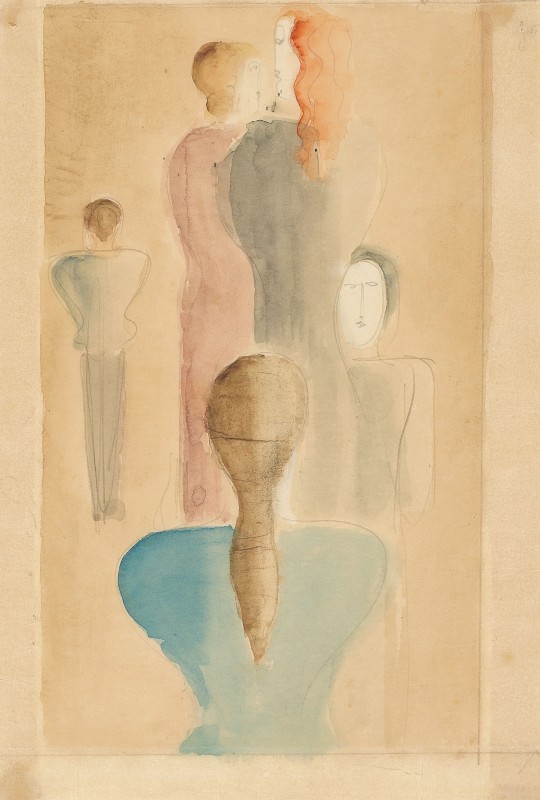
Oskar Schlemmer - Frauentreppe II. 1925
18 notes
·
View notes
Text
Intoxicating Fear - Masterpost
Ongoing Series
“Oh yes,” said Omen, tone reminiscent. “Old Mentor went mad trying to stop me, poor dear.”
“You drove him crazy! You weaponised his own mind against him,” Kit said, hatred colouring his voice. Omen smirked.
“I was going to do the same to you,” said Omen, his voice flowing through Kit’s ears like liquid silver. “It’s a favourite of my many gifts. Not at all fit for combat like lightning or water, but I can break you without breaking a sweat. Even before I took your mind you couldn’t lift a finger against me.”
*~*~*~*~*~*~*
Omen.
It was a whisper, a rumour, the bogeyman - nobody who met him lived to tell about it, or if they did, they didn't remember. Almost everything about him was unknown until he drove Mentor mad and claimed the notoriety for bringing the world's greatest Superhero to heel.
On his first solo mission, Kit, the hero Malyn, gets far more than he ever bargained for. Omen takes Kit as a trophy, a play-thing, a puppet - addicted to being Kit's biggest fear.
Will Kit escape Omen, or is he doomed to be Omen's puppet forever, or worse... end up like Mentor - mind melted, hospitalised, and scared of his own shadow?
Main Characters

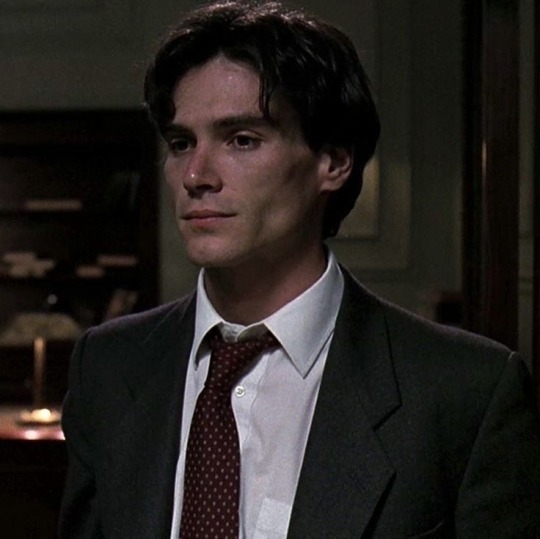
Kit Mallory (22) — Malyn
Kit showed incredible promise in the young Hero Academy and was offered to be Mentor's sidekick, the greatest Superhero in the world. Kit took the offer, Mentor taking him under his wing as if he were family and soon that's what they grew to be; family.
After Omen attacks Mentor, Kit's entire life is uprooted, unraveling before him and he's consumed by vengeance, promising Mentor he would avenge him. He just didn't expect to meet Omen so soon, so suddenly, so unaware.
He’d be damned if he let Omen know that.
Oskar Ambrose (29) — Omen
Not much is known about Ambrose. That’s the way he likes it. The less people that know about him the better, and yet, there was something about Malyn that he couldn’t quite put his finger on. Something like a puzzle that he wanted to solve.
Never before had anyone made Ambrose not want to use his powers to force them to submit. Malyn… he was like the gift that keeps on giving— life is too short not to abuse a Hero every once in a while. If during the course of his meddling it happened to further his own agenda, well — that would just be an added bonus.
Chapters
Prologue
Part one - Introductions
The Old Fairground
A crude awakening
Instant Regret
Breaking balls
Know your place
Part two - Homeward Bound
6. Welcome home 7. The Great Escape 8. A visitor comes a-knocking 9. Much needed alone time 10. Reprieve
Part three - A devil’s bargain
11. A deal with the devil 12. Breakdown 13. Family time
14. Wake up call
15. A foreboding calm
Part Four — shit hits the fan
16. Surprise visitor
17. Unforeseen Side-effect
18. New player on the board
19. The blood of the covenant
20. Revealing the Monster
Part Five — Supervillain saga
21. Keep your friends close
22. Wibbly-wobbly-timey-whimey stuff
23. Breaking spirits
24. Wolf In Sheep’s Clothing (part I)
25. Wolf In Sheep’s Clothing (part II)
Part Six — Shit hits the fan part 2: electric boogaloo
26. A Fool’s Bargain
27. Disoriented Dazed
28. Breaking bones
29. The difference between abuse and power
#intoxicating fear#intoxicating fear masterpost#hero villain writing#hero villain snippet#writblr#writeblr#creative writing#my writing#Kit Mallory#Oskar Ambrose#I am so great at tagging#whump writing#whump series#whump story#whump masterpost#ooga booga#self sacrifice#self sacrifice whump
129 notes
·
View notes
